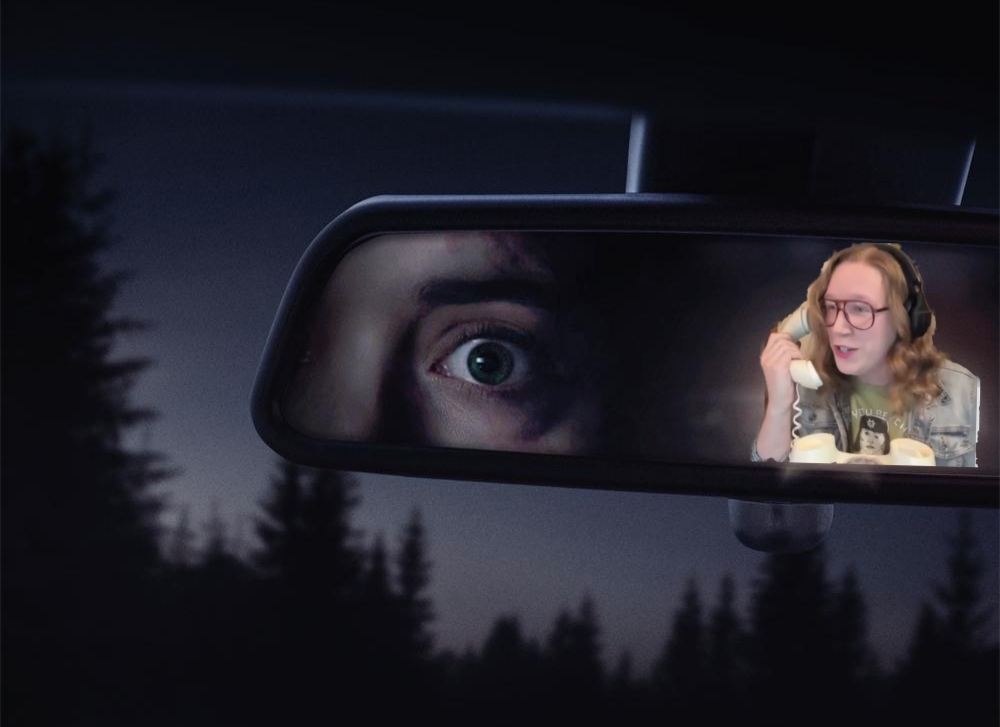Aster’s Top 10 Films of 2020

by Aster, GenreQueer Coordinator
2020 was a great year for cinema, despite being an uncertain one for film industries. I’m not going to lie, a year without endless superhero blockbusters was refreshing as it gave more space to the diversity of cinema that is always present.
I still haven’t been able to see MONSTER HUNTER (dir Paul W.S. Anderson) or SWIMMING OUT TILL THE SEA TURNS BLUE (dir. Jia Zhangke), my two most anticipated films of the year. So, until then here are my 10 favorite films of 2020 (by global release date).
10. ALONE (dir. John Hyams)
A lean, efficient thriller from the master of direct-to-video action films, director John Hyams pares it down for this cat and mouse chase between a serial killer and a young woman. A contemporary echo of THE MOST DANGEROUS GAME (1932), ALONE is a masterclass in tightly composed suspense. With a modest budget Hyams turns out fluid, kinetic action, grounded in the physicality of his performers. ALONE also boasts one of the best final fight scenes I’ve seen in years.
9. S01E03 (dir. Kurt Walker)
Kurt Walker’s hour-long feature is a sustained experiment in cinema as vibes. A melancholic film that captures what it feels like to live through the end of an era. S01E03 is set during the final days of an online MMORPG video game where a band of online friends wander the virtual landscapes of the virtual fantasy world one last time before the servers are turned off for good. It’s the cinematic equivalent of finding a forgotten CD-R mixtape that transports you to a time long since passed. You can view S01E03 for free at Kinet Media.
8. GRADATIONS I-II (dir. Dylan Tachick)
André Bazin famously wrote that cinema is a death mask, like the Ancient Egyptian practice of embalming. What we see on the screen are ghosts, phantoms of a lost time. Comprised entirely of shots of a cemetery, GRADATIONS I-II embodies the strange sense of immortality that film imbues its ephemeral subjects with. This is a work of staggering beauty that announces the arrival of a major voice in experimental film. GRADATIONS I-II can be viewed for free at Kinet Media.
7. SIBERIA (dir. Abel Ferrara)
With SIBERIA, maverick director Abel Ferrara continues his collaboration with Wisconsin’s favorite son, Willem Defoe. An examination of masculinity and the fantasy of rugged individualism, Defoe plays a man who retreats to the isolation of a cabin on the tundra, where he goes to work through his troubled past. He embarks upon a dream journey filled with unreal imagery and haunting figures. SIBERIA is far out, and like Sam Raimi’s SPIDER-MAN (2002), it features a knock-out sequence of Defoe having a conversation with a different character who also happens to be his own reflection.
6. MOVIE THAT INVITES PAUSING (dir. Ken Jacobs)

WATCH MOVIE THAT INVITES PAUSING HERE!
When we’re not watching films at the historic Oriental Theatre, we’re at home smashing that pause button, busting up the rhythm of the films we watch. For once, we are invited to do this very thing. MOVIE THAT INVITES PAUSING is a stroboscopic journey into a pure formalism of shapes, colors, and patterns that pushes the boundaries of cinematic perception. It’s a cerebral experience that feels like you slipped into a Kandinsky painting. And with the invitation to pause and examine, it becomes an interactive cinema of boundless potential.
5. AUTOFICCIÓN (dir. Laida Lertxundi)

In her latest short work, Lertxundi explores her familiar themes of the passage of time, the music of everyday life, and the relationship between truth and fiction. AUTOFICCIÓN plays like a mixtape; a snapshot of the sounds, images, and experiments of a particular moment in time. This hybrid of documentary and fiction showcases Lertxundi at her most playful. I love the jerky lyrical refrains of “I don’t know what the day may bring” and “time is on my side, yes it is” weaving together interviews with women talking about change and the deadpan skits that feel like dreams. AUTOFICCIÓN is at once a reflection and an act of discovery.
4. THE WOMAN WHO RAN (dir. Hong Sang-soo)
The cinema of Hong Sang-soo is one of quiet intimacy. His films explore the tumultuous emotional currents that swirl beneath the placid surfaces of everyday life. THE WOMAN WHO RAN is one of his most pared-down efforts, but its simplicity is deceptive. A young woman visits three friends on the outskirts of Seoul. With each encounter, an increasingly complex world of possessive men takes shape amid the polite conversations between old friends reconnecting. A melodrama of stillness, THE WOMAN WHO RAN is the work of a master at the top of his game and shows just how much can be done with a film about visits and manners.
3. STILL PROCESSING (dir. Sophy Romvari)
Sophy Romvari’s latest non-fiction short is a work of profound emotional depth matched only by its sophisticated style. A personal film about family tragedy and the haunting power of photographs, Romvari explores the relationship between the photochemical process of developing photos and the life-long undertaking of processing grief. This personal journey transforms an archive of home movies into a meditation on how media shapes our memory of loved ones. STILL PROCESSING is as tender as a sob caught in the throat and as cathartic as a howl of pain.
2. DA 5 BLOODS (dir. Spike Lee)
With DA 5 BLOODS Spike Lee delivers a messy, sprawling interrogation of American imperialism and colonial racism. Lee examines the political and psychological consequences of the Vietnam war, seeking out the connections between Black American and Vietnamese soldiers. But what makes DA 5 BLOODS more than just agitprop are the stellar performances on display. A film overflowing with talent: Clarke Peters, Isiah Whitlock Jr., rising star Jonathan Majors, and a showstopping performance by the great Delroy Lindo. It’s also one of the very last films from Chadwick Boseman, who gives a mesmerizing performance despite his limited screen time.
1. DAYS (dir. Tsai Ming-liang)
Dubbed the master of slow cinema, Tsai Ming-liang’s works have always dovetailed with museum-style installation art. With DAYS, Tsai presents a near-silent film about modern loneliness and queer desire. Yet this patient, still film is not without its surprises. Its subtle rhythms give way to one of the most shockingly erotic sequences of queer desire that I’ve ever seen. Today there is no shortage of filmmakers who make long, slow, dare I say boring films, but none match the symphonic rhythms of the work of Tsai Ming-liang, who operates entirely on his own level.

Posted by: Tom Fuchs